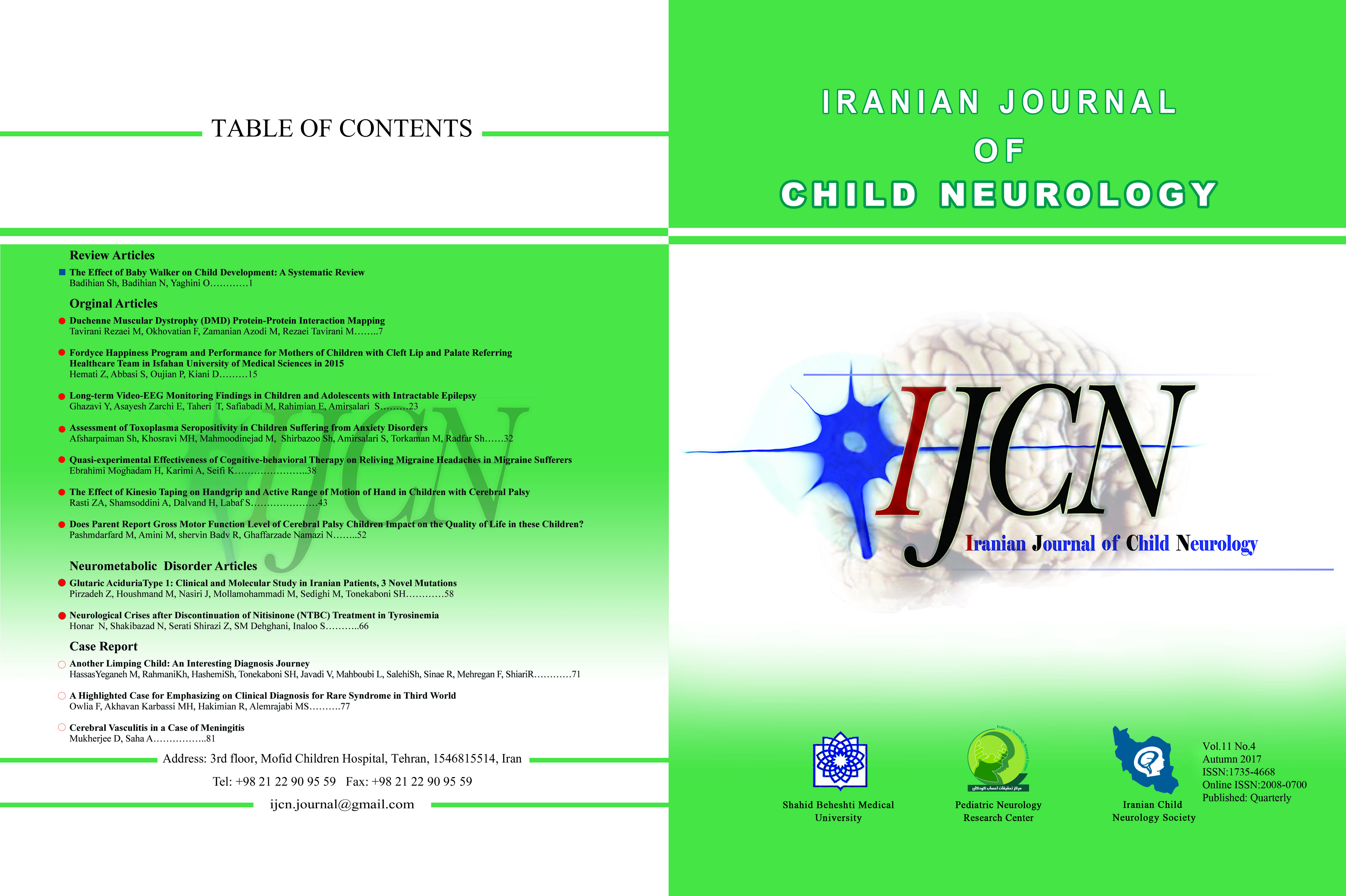The effect of baby walker on child development: a systematic review
Iranian Journal of Child Neurology,
Vol. 11 No. 4 (2017),
13 September 2017,
Page 1-6
https://doi.org/10.22037/ijcn.v11i4.15509
Abstract:
Baby walkers are used all around the world as a fun equipment without any dangers. In contrast with public beliefs, some researchers have claimed they can cause developmental delay. We aimed to investigate their effect on child development through a systematic review. We searched Pubmed, Google Scholar, Embase, and Scopus for related articles in English and included all study designs. Of 315 articles found in Pubmed, 1630 citations in Google Scholar, 18 articles in Embase, and 38 papers in Scopus, only 9 articles fulfilled the inclusion criteria. Among them, only a cohort and a cross-sectional study reported developmental delay caused by baby walker use. Based on the current data, evidence against baby walker is not enough regarding its negative effect on child development. This subject needs to be addressed more, considering the large number of baby walker users worldwide.
